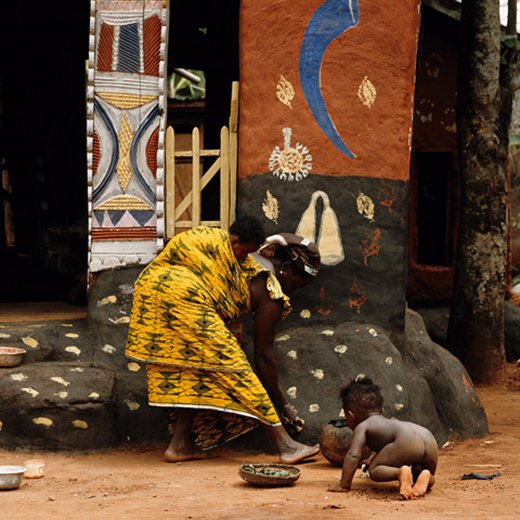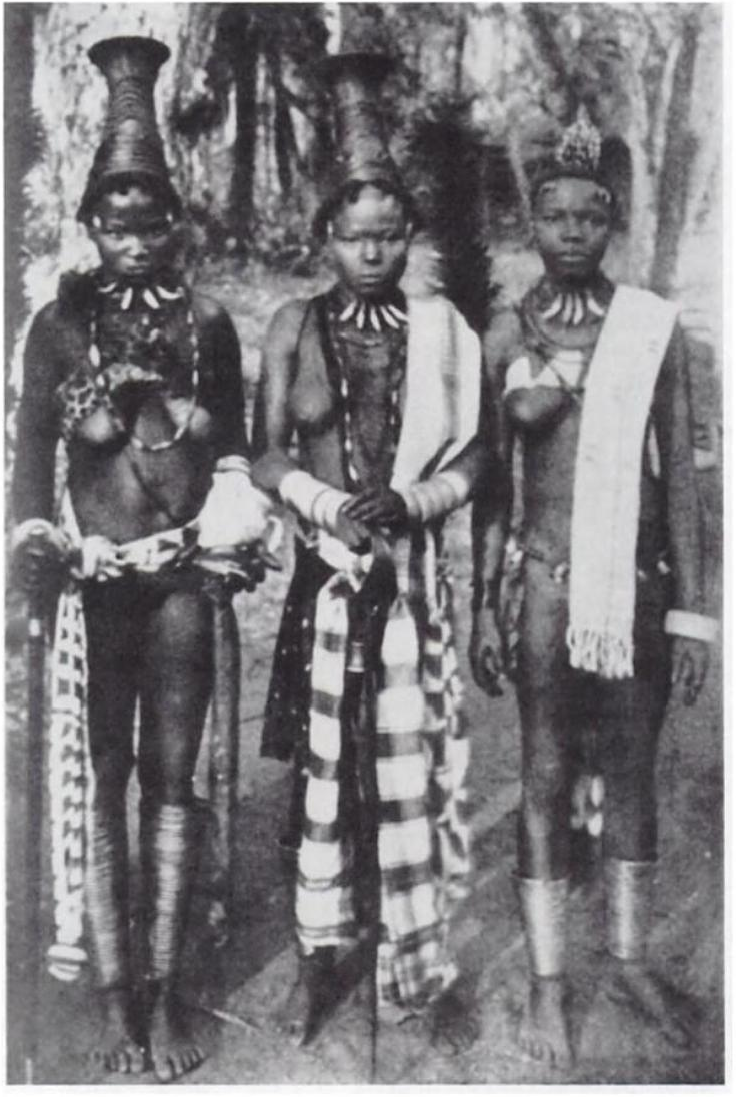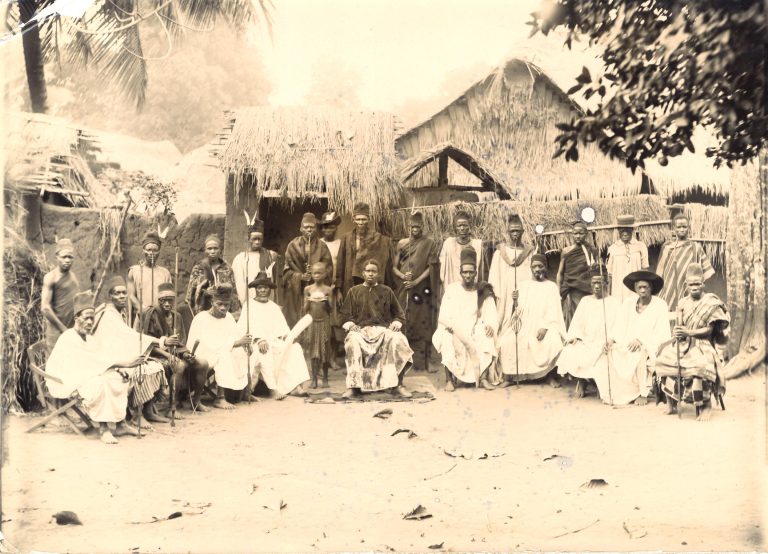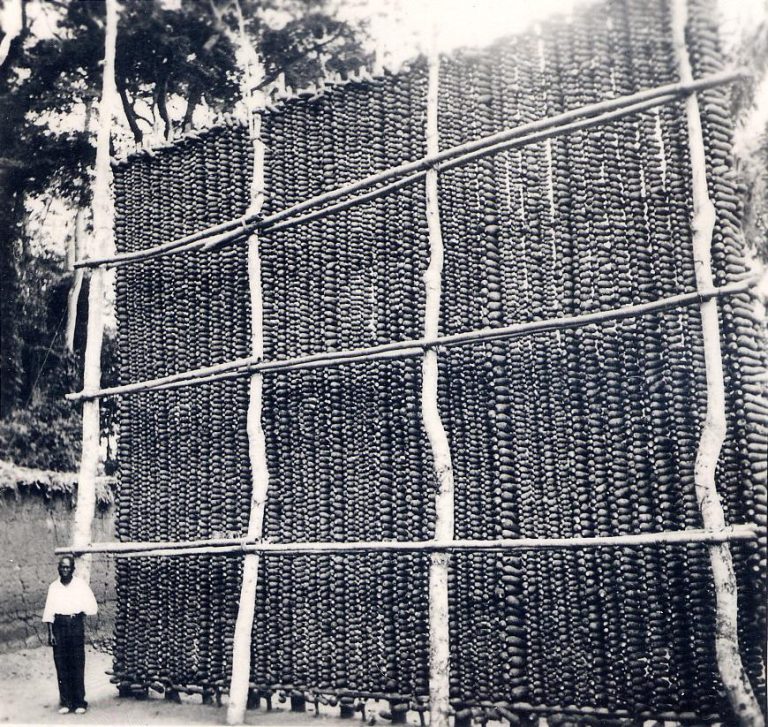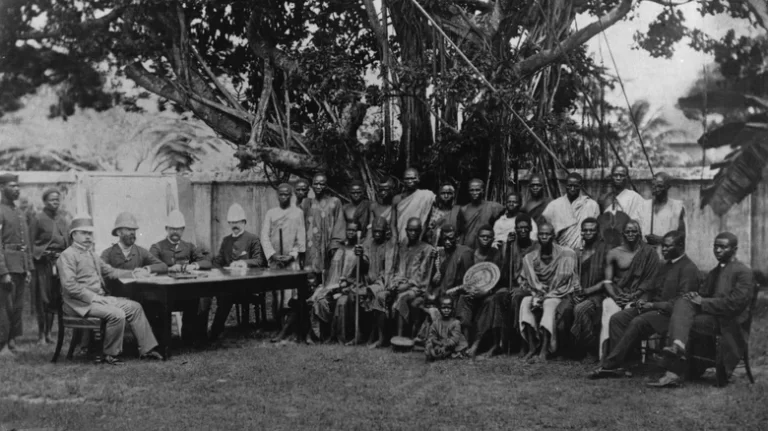The Eze Nri, the traditional ruler of the ancient Kingdom of Nri in present-day southeastern Nigeria, stands as a symbol of peace, culture, and spiritual authority in Igbo history. Unlike other African kingdoms, the Eze Nri wielded power not through military might but through religious and cultural influence. This established a theocratic state centered on spiritual leadership and moral authority.
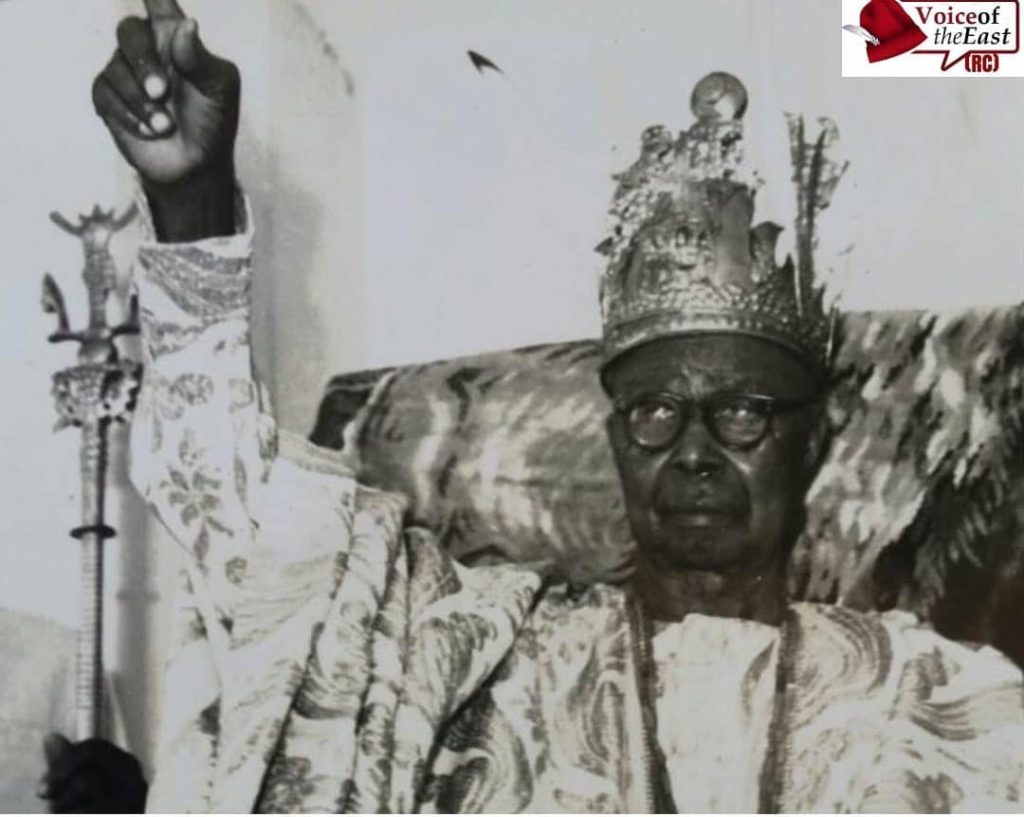
Historical Significance
The Kingdom of Nri, which dates back to the 10th century, was founded by Eri, considered the progenitor of the Nri people. The Nri people believed their ruler possessed supernatural powers granted by Chineke (God). The Eze Nri was seen as the intermediary between the divine and the people. This spiritual leadership was embodied in the Ikenga, the sacred symbol of authority.
The Eze Nri’s influence extended far beyond his immediate domain. He established markets and agricultural practices across Igboland, introducing essential crops like yam and cocoyam, which became staples in the region. Moreover, the Eze Nri instituted the four traditional market days—Eke, Orie, Afo, and Nkwo—that are still observed in Igbo culture today.
Economic and Social Innovations
One of the remarkable aspects of Nri’s administration was its early form of economic innovation. The Eze Nri introduced a rudimentary banking system using cowries as currency. This facilitated trade both locally and with external partners. This system included elements resembling a stock exchange, where titled men could trade shares represented by sacred staffs called “ọfọ.”
The Kingdom of Nri also became a sanctuary for escaped slaves and those seeking refuge from conflicts in other regions. This unique aspect highlighted Nri’s reputation as a “peace kingdom,” fostering an environment where economic activities thrived without the threat of warfare.
Cultural Contributions
Culturally, Nri is renowned for its bronze works, which are noted for their purity and naturalistic detail. These artifacts, alongside oral traditions and rituals, provide valuable insights into the sophisticated society that Nri represented. The kingdom’s non-militaristic approach to expansion and influence was rooted in a deeply held belief in oaths and spiritual authority rather than force.
The Role of Eze Nri
The Eze Nri were seen as divine priests and custodians of the Igbo culture. They performed sacred rituals, resolved disputes, and ensured the well-being of their people. Their influence was not limited to Nri Town but extended to other Igbo communities through a network of ritual agents and emissaries. The Eze Nri were also known for their role in the spread of the ikenga cult and other religious practices across Igboland.
The Significance of Nri Rituals and Traditions
Nri rituals and traditions were integral to the social and spiritual fabric of the Igbo people. The Eze Nri performed various ceremonies, including the yam festival (Iri Ji), which marked the beginning of the harvest season. They also played a key role in the Ozo title system, a prestigious title that conferred social status and responsibilities on its holders. The Eze Nri were believed to have the ability to control natural phenomena, such as the appearance of locusts, further cementing their divine status among the people.
The Legacy of the Eze Nri
The legacy of the Eze Nri is a testament to the enduring cultural and spiritual heritage of the Igbo people. Despite the challenges posed by colonialism and modernity, the traditions and influence of the Eze Nri continue to be revered and respected. The history of the Eze Nri provides valuable insights into the governance, religion, and social organization of the Igbo people, highlighting the importance of preserving and celebrating this rich heritage.
Comprehensive Profiles of the Eze Nri
The First Seven Eze Nris (Nri Namoke)
The initial seven Eze Nris, known by the regnal title ‘Nri Namoke,’ originated from the Diodo section of Nri Town. Over time, traditions have merged their histories into one figure, commonly referred to as Nrinamoke.
- Ogbuodudu Akakọmme (Nri Namoke I) – Also known as Okporo Odudu, Ogbuodudu Akakọmme was a son of Eri who migrated from Agụleri to Amanuke. Either he or his successor moved to the current site of Nri Town after a brief stay at Achalla-Isuana, founding the Diodo section. Initially, the Eze Nri hailed from this section until the kingship transitioned to Nribụife from the Agụkwu section generations later.
- Edu Anyịm (Nri Namoke II) – The son of Ogbuodudu/Okporo Odudu, Edu was a prominent Eze Nri whose influence extended to far-away Akụ near Nsụka. Ritual agents from Nri introduced the Odo cult to the Akụ people. During the Odo festival, they proclaim: “Nshi Namoke Nwa Okporo Odudu, Ezitere Odo na ọnọghalụ n’Igbo,” signifying the message from Nri Namoke II that Odo has overstayed.
- Nri Egbobe (Nri Namoke III) – Nri Egbobe, a usurper not qualified by blood, ascended the throne due to the lack of an eligible successor from Okporo Odudu’s line. His brief and tyrannical reign ended when the Diodo people exiled him to the Evil Forest, where he cursed them before dying. His curse led to misfortunes, including a fatal tree-felling accident, causing a mass exodus and underpopulation in Diodo, which shifted power to Agukwu.
The next three Eze Nris, likely from the 15th century, have little recorded about their reigns: 4. Anwụ Obele (Nri Namoke IV) 5. Odunukwe (Nri Namoke V) 6. Agufugo Egbeli (Nri Namoke VI)
- Ezeagụ Akubilo (Nri Namoke VII) – By this time, the Agụkwu section, established by Nri Ifikuanim, had a parallel kingship. Nri Namoke VII’s daughter married into this line, producing Nribụife. Neglected by his people, Nri Namoke VII cursed his family, declaring the kingship would leave Diodo. He handed the royal paraphernalia to his grandson, Nribụife, from the Nrifikwuanim line, which has reigned since. Recently, Diodo attempted to reclaim the kingship by crowning Chikadibia Ọgụnmọ as Nri Namoke VIII, opposing the recognized Nri Enweleana II.
Subsequent Eze Nris
- Nribụịfe – Nribụịfe unified Agụkwu and Diodo-Akamkpịsị into one kingship, establishing the “Council of State” known as Nzemabụa, comprising twelve high-ranking ozo titleholders.
- Nri Ọmalọ – We know little about him beyond his name.
- Nrijimọfọ I – A notable king whose reign saw the spread of the ikenga cult across northern and western Igbo areas. His influence reached Nsụka, Ọlụ, and Agbọ, consolidating and expanding Nri’s far-reaching influence.
- Nri Ọmalonyeso – We know little about him beyond his name.
- Nri Anyamata – A severe drought and famine marked his reign in the mid-17th century. Chronological evidence suggests his reign coincided with the Little Ice Age droughts in West Africa.
- Nri Fenenu – Renowned for his mystical powers, Fenenu’s reign saw the first recorded appearance of locusts. His mastery of levitation earned him his reign name. His supernatural abilities troubled the townspeople, leading to his ritual death. Authorities barred his lineage from producing future Eze Nris.
- Nri Agụ – His reign began with promise, marked by increased trade and wealth. Nri settlements, such as Ogboli Igboụzọ and Ọgwashị-Ukwu, emerged during his time. However, he found the restrictions of kingship unbearable and abdicated, settling in Ọraukwu.
- Nri Alike and Nri Apịa – These wealthy men vied for the throne, both becoming Eze Nri. Their reign saw the expansion of the trans-Atlantic slave trade. Despite authorizing the trade, they declared it an abomination to kill or bleed a slave, claiming Nri did not practice human sacrifice.
- Nri Ezimilo – Thieves murdered Ezimilo, a ritual agent from Asaba, shortly after he became Eze Nri. His death led to a severe drought, attributed to his wrath.
- Nri Enwenetem – Succeeding his father without the usual interregnum, Enwenetem’s reign ended the drought after Enugwu Ukwu made amends for Ezimilo’s murder.
- Nri Añụa – An aged man who abdicated in favor of a younger candidate. His name does not appear in the official kinglist, but his descendants maintain his memory.
- Nri Enweleana I – His reign coincided with the career of the notorious Arọ slave dealer Okoli Ijọma of Ndịkeliọnwụ, who was raiding the Nri-Ọka axis in the mid-19th century. Enweleana I sent his ritual agents to dissuade Ijọma from slave-raiding and from instigating towns to fight one another with arms and the Ada [Edda] warriors which he (Ijọma) supplied. When Ijọma rebuffed the Eze Nri’s diplomatic overtures, Enweleana I placed an anathema on him and formed a military alliance called Amakọm to resist the activities of the Arọ slavers. Around this time, Nri, Ọka, Enugwu-Ukwu, and some other towns within Nri’s sphere of ritual control probably stopped holding slaves and set up a settlement for refugees from slave raids and ex-slaves, known as Amọbịa. The member-towns of the Amakọm military alliance set up to resist the Arọ were: Ọka, Nibo, Nise, Amọbịa, Ugwuọba, Enugwu-Agịdị, Ebenebe, Ukpo, and Amansi. The military alliance reportedly achieved some success in checking the Edda raids in the Nri-Ọka axis, notably defeating the hired warriors at Nọfia and Enugwu-Ukwu. Nri Enweleana I died around 1869, and Nri Ọbalike succeeded him after a long interregnum of about 20 years.
- Nri Ọbalike – Nri Ọbalike became Eze Nri around 1889 and was the Eze Nri when British colonialism arrived in the heart of Igboland. Against the tradition that an Eze Nri must not leave his town, the British forced him to attend the Native Court at Ọka. It was a reflection of the awe and terror in which the people of the Nri-Ọka axis held the Eze Nri that when Nri Ọbalike entered the Native Court for the first time while a sitting was going on, the whole assembly rose and prepared to flee. In Ọka, the British forced him (at gunpoint) to renounce the powers of his sacred office. In August 1911, the British colonial administrators struck the biggest blow on the power of Eze Nri Ọbalike when they compelled the Eze Nri to publicly abolish nsọ and alụ (the very props of the Eze Nri’s authority) in a gathering of the Eze Anị (chief priests of the Anị deity) at Nkwọ Marketplace in Enugwu-Ukwu. By this act, the Eze Nri was repudiating his ritual control of Igbo communities: the Nri hegemony had come to an end, in theory at least. Eze Nri Ọbalike passed on in 1926.
- Nrijimọfọ II – Eze Nri Tabansi Nrijiofor was the first Eze Nri of a ‘modern’ Nri Town. He reigned from 1938 to 1979 after succeeding Eze Nri Ọbalike, who passed away in 1936. He passed away in 1979.
- Nri Enweleana II – Eze Nri Enweleana II Obidiegwu Onyeso became Eze Nri in 1988. He passed away around 2018 (the death and burial of Eze Nri are not usually publicised, as they were supposed to be immortal), and his son Prince Ikenna Onyeso became the Regent of Nri in 2019.
References
- Eze Nri Ìfikuánim
- Ikenga – Wikipedia
- Kingdom of Nri – Wikipedia
- The Legacy of Nri Civilization: Ancient Igbo Culture and Traditions
- Kingdom of Nri – the history of Nigeria
- Kingdom of Nri – Wikipedia
- The Legacy of Nri Civilization: Ancient Igbo Culture and Traditions
- Kingdom of Nri – Wikipedia
- The Legacy of Nri Civilization: Ancient Igbo Culture and Traditions
- IGBO HISTORY (IGBOS SINCE 3000BC) | The Divine Kings (Eze Nri) of Agukwu-Nri: Short Profiles. By Nwafor Obinna Stanley
Discover more from Igbo Archives
Subscribe to get the latest posts sent to your email.


